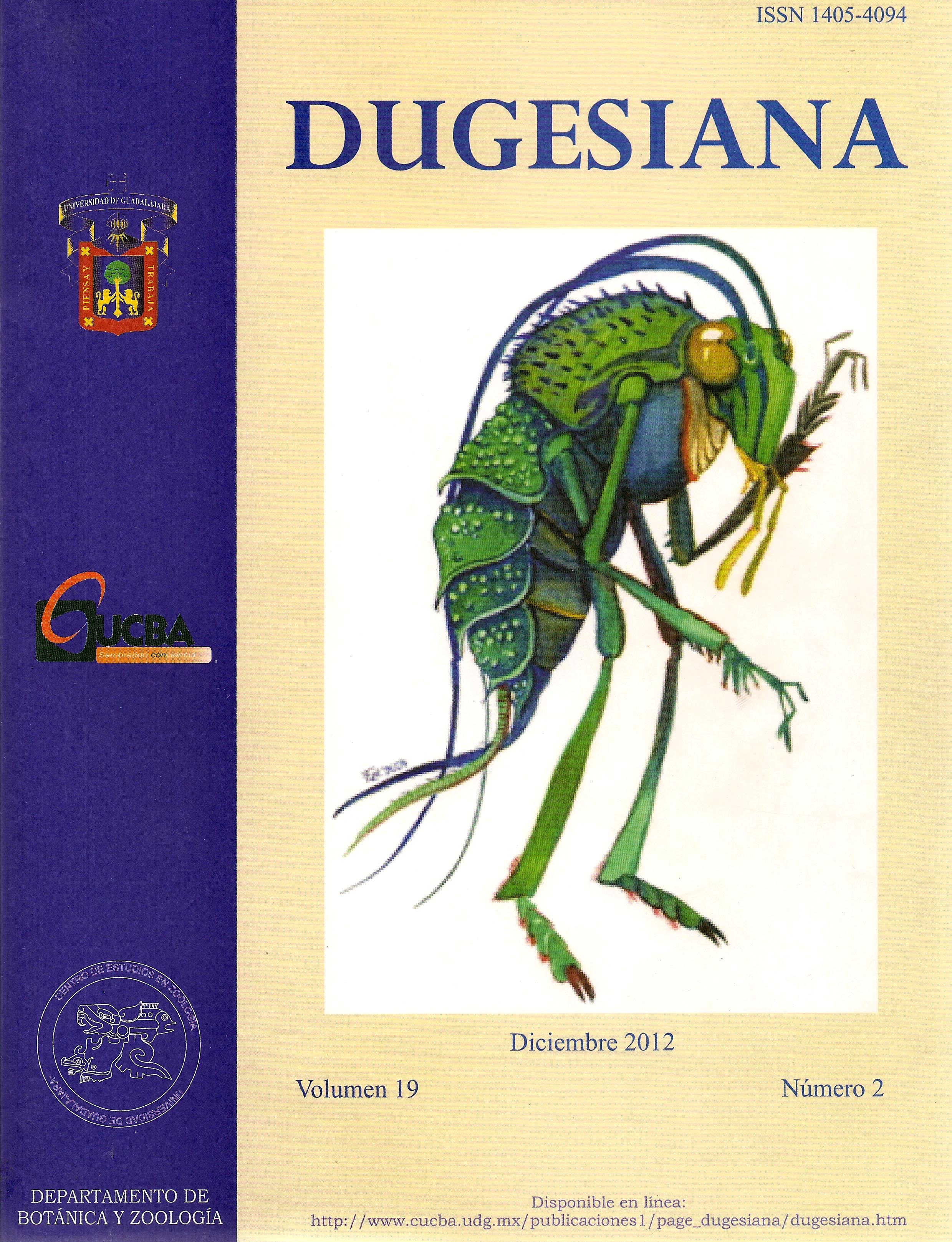HYMENOPTERA: Primeros registros de hormigas (Hymeoptera: Formicidae) en suelos de mangle blanco (Laguncularia racemosa) en Xcalak, Quintana Roo, México Gabriela Castaño-Meneses
DOI:
https://doi.org/10.32870/dugesiana.v19i2.4067Keywords:
Composición, Manglares, Riqueza de Especies, Península de Yucatán.Abstract
En muchas comunidades de manglares, las hormigas son reconocidas como el grupo dominante de artrópodos por su abundancia. En el presente trabajo, se estudió la mirmecofauna presente en el suelo del área de Xcalak, Quintana Roo, México durante febrero de 2010. El estudio se desarrolló en parcelas sin impacto antropogénico evidente cercanas al poblado de Xcalak (18°16’ 00’’N-87° 50’ 7.79’’W) donde domina el mangle blanco (Laguncularia racemosa). El muestreo se realizó mediante trapas NTP-80 cebadas con calamar y que contenían una mezcla de alcohol y anticongelante en una proporción de 70:30, utilizando 30 trampas que fueron activadas durante 7 días. El material colectado fue lavado con agua corriente, identificado y almacenado posteriormente en alcohol al 70%. Series de los ejemplares colectados fueron montados en alfileres para su revisión. Nueve especies de ocho géneros fueron registradas en el estudio (Forelius, Linephitema, Paratrechina, Camponotus, Solenopsis, Acromyrmex, Pseudomyrmex y Odontomachus), resultando Solenopsis geminata la especie más abundante, seguida de Forelius mccooki. De acuerdo con otros estudios realizados en manglares mexicanos, las comunidades de hormigas en este ambiente muestran una baja riqueza de especies pero altas abundancias, tal como se encontró en este estudio. Este es el primer registro de especies de hormigas para manglares en el área Xcalak.Downloads
Published
2015-09-30
Issue
Section
Artículos
License
1. Proposed policy for open access journals
Those authors who have publications with this journal, accept the following terms:
- The authors will retain their copyright and will guarantee to the journal the right of first publication of their work, which will be simultaneously subject to the Creative Commons Recognition License, which allows third parties to share the work whenever their author is indicated and His first publication is this journal.
- Authors may adopt other non-exclusive license agreements to distribute the version of the published work (eg to be deposited in an institutional telematic file or published in a monographic volume) provided the initial publication is indicated in this journal .
Authors are encouraged and encouraged to disseminate their work through the Internet (eg in institutional telematic files or on their web page) before and during the sending process, which can produce interesting exchanges and increase appointments Of the published work. (See The effect of open access).
2. Proposed policy for journals that offer open deferred access
Those authors who have publications with this journal, accept the following terms:
- The authors will retain their copyrights and will guarantee to the journal the right of first publication of their work [SPECIFY PERIOD OF TIME], which will be simultaneously subject to the Creative Commons Recognition License that allows third parties to share the work always That its author and his first publication be indicated this journal.
- Authors may adopt other non-exclusive license agreements to distribute the version of the published work (eg to be deposited in an institutional telematic file or published in a monographic volume) provided the initial publication is indicated in this journal .
- Authors are encouraged and encouraged to disseminate their work through the Internet (eg in institutional telematic files or on their web page) before and during the sending process, which can produce interesting exchanges and increase appointments Of the published work. (See The effect of open access).




